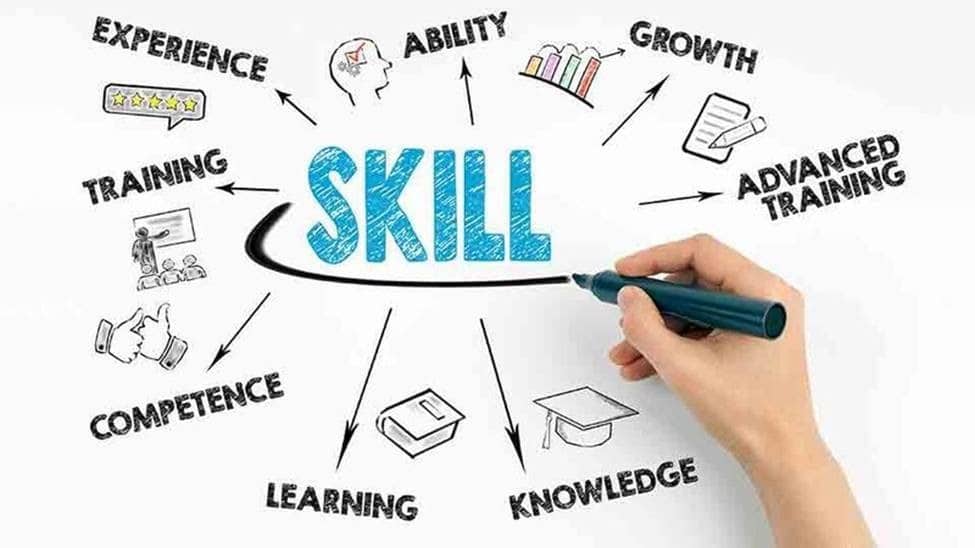Continuous learning is the process of constantly learning and updating new and existing skills and knowledge. Continuous learning entails developing new skills and knowledge in the workplace while reinforcing what has already been discovered. Continuous learning can be done over a set period, or it can be done for the rest of one’s life. Taking a formal course, asking for help with an unfamiliar topic, or experimenting with new and alternative work methods are all examples of activities.

What is Continuous Learning? Its Importance & Benefits
Continuous Learning LMS Features
-
One-on-one reporting
We write reports at work, which can be tedious. Plus, ongoing education is a powerful report generator. If it’s not for a task, you’re checking stats for improvement. This is a year-round feature that will be used frequently. Make it stress-free. It is crucial to generate custom reports that are generated automatically, especially when your L&D team cannot use Big Data to improve your online training program.
-
Gamification
Few of us are driven by a desire to learn. Most of us do it for validation and profit. (Many promotions require advanced degrees.) While better pay and job titles are good in the long run, trainees need motivation now. Ensure your LMS offers gamification. Every unit completed earns a new badge. This includes complex training tasks. Test scores and study speed leaderboards can be helpful. Rewards points are always popular.
-
Progress Indicators
It’s good practice to have a visual representation of your progress. It could be a slid bar, colored dots, or anything else. This is a longer-term incentive for continuous learning. Your chart can show you how far you’ve come. And instructors can use your training chart if it goes that far ahead. It tells them when you need new content or a new course combo.
-
Course Choosing Tools
First, you must draft the learning path. Then, get an easy-to-use LMS for continuous learning. Drag-and-drop course repositories are a must-have so trainees (and L&D experts) can easily select and sequence courses. The site should also allow HR/admin to create “starter packs” based on interests and job titles. These WYSIWYG curation tools will enable the trainee and their instructor to create a course quickly. Unsettled trainees can start with a template pack (e.g., accounts for beginners). Then, the trainee (or mentor) can easily tweak it as they go.
-
Built-in Collaboration
Peers have abundant knowledge to share. But it would help if you had a collaborative learning LMS to tap into. For example, new hires can use online forums to ask questions, while seasoned employees can host live events or assist coworkers via live chat. This also allows everyone to give and receive performance-enhancing feedback.
-
Simple UI
All of these LMS features rely on one thing: usability. Employees can’t collaborate if they can’t find or use the platform’s tools. If the software is too complex, your L&D team cannot customize reporting or update content. A user-friendly interface is the essential feature of a new LMS. That’s another reason to sign up for a free trial or demo first. In addition, it allows you to identify potential UI roadblocks that could slow you down.
Empower your team to achieve continuous learning and growth with Paradiso – start your free trial now
Why is Continuous Learning important?
Employee skill sets must evolve to meet the demands of the business climate because an organization’s success is dependent on its people. This is contingent on the workforce’s ability and knowledge. But how do you find this type of workforce in the first place?
Continuous learning enables a company to achieve higher employee knowledge levels while also ensuring that the peak is maintained through regular reinforcement activities. For example, an introduction to R course online can be a valuable part of a continuous learning program for data analysts. Continuous learning is required to innovate, try a new process, or do something new.
This learning must be flexible, on-demand, and ongoing to contribute to this level of cutting-edge performance. Continuous learning in the workplace is to keep employees’ knowledge and skills up to date.
Organizations must be ever dynamic to socio-economic factors to remain competitive. Innovation does not happen, processes remain unchanged, and nothing new is ever accomplished when organizations do not support a continuous learning process.
The benefits of continuous learning
In the workplace, continuous learning can broaden employee skill sets, improve skill and knowledge retention, generate new ideas and perspectives, boost morale, and improve overall employee performance. On a per-employee basis, this could include:
- Assist in achieving career development objectives
- Professional licenses or certifications should be obtained or updated.
- Investigate new ways of approaching work.
- Keep your professional skills marketable.

Continuous learning can benefit an organization in the following ways:
- Contribute to the organization’s objectives
- Contribute to forward-thinking, innovative workplace culture.
- Make employees feel valued by demonstrating an investment in their personal development through implementation.
- It is less expensive to invest in the continued development of current employees than to begin training a new employee, which helps keep costs down.
Examples of Continuous Learning
Formal Learning
Formal learning is participating in a series of activities that have been pre-planned, pre-determined, organized, and implemented to achieve a specific learning goal or purpose. University or college courses, training programs, mobile learning courses, MOOCs, and other online learning initiatives are examples.
Social Learning
The ways a learner interacts discusses, collaborates, and learns from others to increase knowledge or learn new skills are referred to as social learning. Discussion and collaboration on social media, finding blogs or other resources to gain deeper insight, working with other coworkers, coaching and mentoring on-the-job training are all examples.
Self-Learning
Self-directed learning is a method of increasing your knowledge and understanding of something without going through formal training or collaborating with others. For example, listening to relevant podcasts or watching instructional videos and conducting research and reading can help you gain a thorough understanding of a subject.
How do we establish a continuous learning environment in your organization?
To create an environment that encourages continuous learning among employees, commitment, resources, and coaching are needed. Unfortunately, most employees will not be able to pursue continuous learning on their own because of a lack of time or resources. Let’s look at the options for dealing with this situation.
-
Continuous learning starts with leaders
When employees see their manager or supervisor actively engaged in and supportive of learning and development initiatives, it fosters a culture of lifelong learning. Employees may find it challenging to take time away from their regular work tasks if they believe management will not approve. By acting as a role model, you can show employees that their work is essential and valued.
-
Make a learning strategy
Organizations must devise a strategy for their employees to engage in continuous learning. This entails determining the desired business outcomes and determining how to achieve them. A plan can include what resources or support individuals may require and what types of learning, such as mobile learning or mentoring, can be provided.
-
Allocate time and resources for ongoing learning
Time and resources are the most critical aspects of creating a learning environment. Employees must have access to these. Depending on the organization’s needs, department, or individual employees, this can take many forms.
Final thoughts
By embracing a culture of “investing in people,” companies have trained their existing employees rather than hiring new employees, which is often much more expensive in various ways.
Most businesses nowadays want to invest in retaining and developing their talent pool, ensuring that employees are well-trained and up-to-date to respond to the company’s ever-changing needs.
Because new skills are constantly added to their ‘arsenal,’ this also builds trust and keeps employees engaged and interested. Continuous learning is a way for a company to show its employees that they are worth investing in and saving money.










